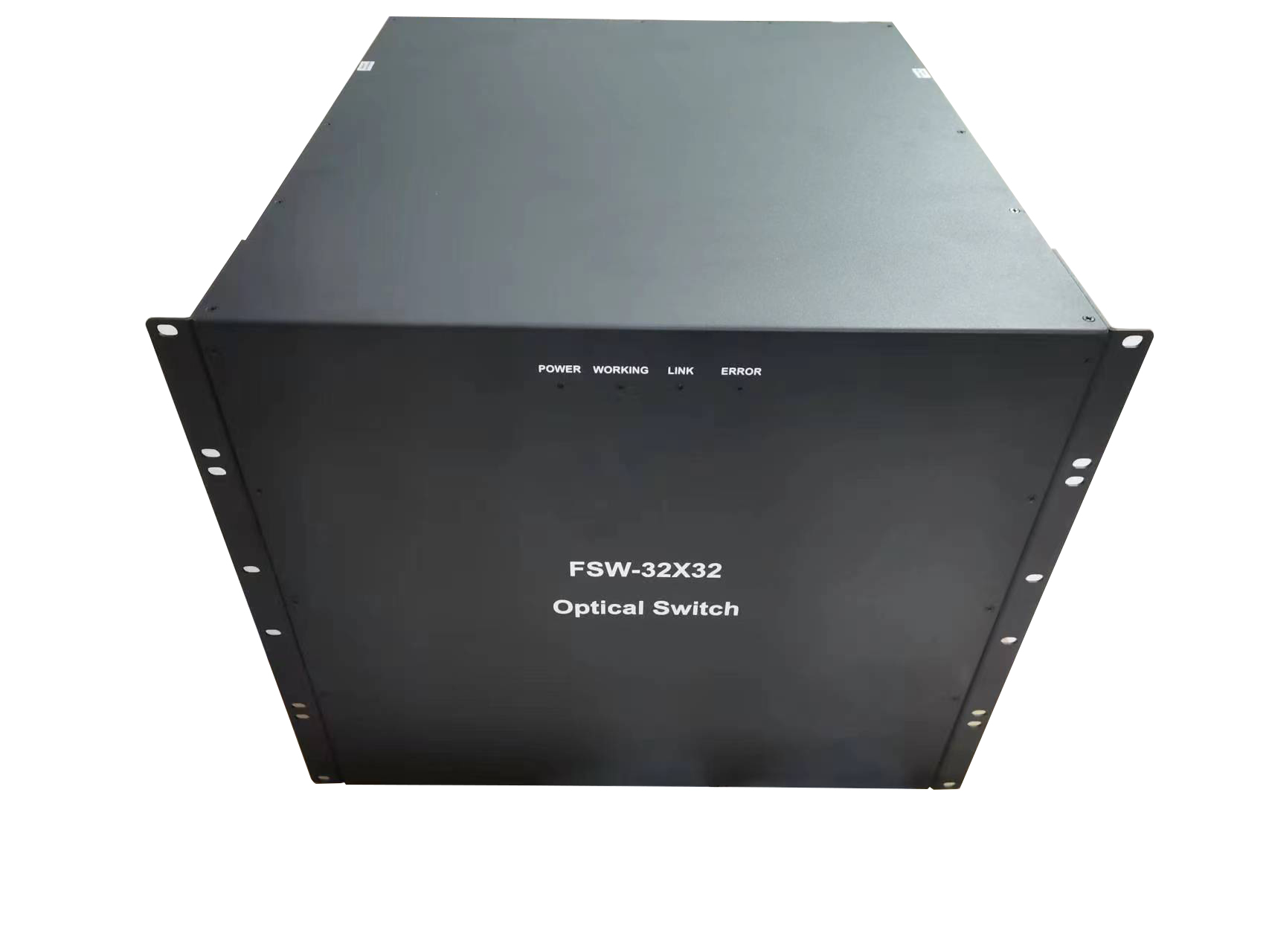What is an All-Optical Switch?
An all-optical switch is an optical device whose core function is to control an optical signal—turning it “on” or “off,” or switching it from one path to another—entirely within the optical domain.
The key lies in the term “all-optical”:
- “All-Optical”: This means that throughout the switching process, the information always remains in the form of light and does not undergo optical-electrical (O-E) or electrical-optical (E-O) conversion.
- Comparison with Traditional Electrical Switches: In traditional optical communication networks, an optical signal first needs to be converted into an electrical signal by a receiver. It is then processed and routed by an electronic switch before being converted back into an optical signal for transmission. This process is slow, energy-intensive, and can create a bandwidth bottleneck.
You can think of it like this:
- Traditional Electrical Switch: Like a railway dispatcher who needs to unload the cargo (data) from an arriving train (optical signal), then move the cargo by cart (electrical signal) to another train based on its destination before dispatching it.
- All-Optical Switch: Like a fully automated railway switch that directly controls the track’s direction, allowing the entire train (optical signal) to switch to another track and continue at high speed without stopping or unloading.
Core Operating Principle
The operation of all-optical switches relies on non-linear optical effects. Simply put, a powerful “control beam” is used to alter certain physical properties (such as the refractive index) of an optical medium, thereby affecting the transmission state of another “signal beam” that carries the information.
Common physical mechanisms include:
- Cross-Phase Modulation (XPM) and Four-Wave Mixing (FWM): The intensity of the control beam changes the medium’s refractive index, thereby altering the phase of the signal light or generating new frequencies.
- Optical Kerr Effect: An ultrafast non-linear effect where the refractive index changes instantaneously with the light intensity.
- Cross-Gain Modulation (XGM) in Semiconductor Optical Amplifiers (SOA): Utilizes the gain saturation characteristics of an SOA, where a control beam is used to modulate the intensity of the signal beam.
When these effects reach a certain intensity, they can achieve the “on” and “off” of the signal or guide the signal to a specific output port.
Main Types
Based on scale and control methods, all-optical switches are mainly divided into:
- Waveguide-Based Optical Switches
- Principle: Tiny optical waveguides are fabricated on a chip, and the light path is guided by altering the properties of the waveguide through thermal, electrical, or optical effects.
- Characteristics: Small size, low power consumption, easy to integrate. They are key components for future on-chip optical networks.
- Micro-Electro-Mechanical Systems (MEMS) Optical Switches
- Principle: Uses tiny movable mirrors to reflect light beams, thereby switching the optical path.
- Characteristics: Low insertion loss, low crosstalk. However, the mechanical movement speed is relatively slow (millisecond level), making them suitable for optical cross-connects in networks rather than high-speed data switching.
- SOA-Based Optical Switches
- Principle: Utilizes the gain and switching characteristics of Semiconductor Optical Amplifiers. By controlling the current, the signal can be amplified (on) or absorbed (off).
- Characteristics: High speed (nanosecond level), provides signal gain, easy to integrate.
Key Advantages
- Ultra-High Speed: Eliminates the electronic bottleneck. Switching speeds can reach picosecond or even femtosecond levels, orders of magnitude faster than the fastest electronic switches.
- Large Bandwidth: Capable of directly processing wavelength-division multiplexed (WDM) signals without needing separate transceivers for each wavelength channel, greatly enhancing system capacity and flexibility.
- Low Power Consumption: Avoids the frequent and energy-intensive O-E and E-O conversion processes.
- Transparency: Transparent to data rate, format, and protocol. Future network upgrades may not require replacing core switching equipment.
Application Areas
All-optical switches are core components for building next-generation all-optical networks and are primarily used in:
- All-Optical Communication Networks: Enabling high-speed, flexible optical cross-connects (OXC) and optical add-drop multiplexing (OADM) in backbone networks and data centers.
- High-Performance Computing (HPC): Used for ultra-high-speed optical interconnects between computing nodes.
- Optical Computing: Serving as basic logic gates and routing units in optical processors.
- Lidar (Light Detection and Ranging) and Optical Sensing Systems: Used for rapid beam steering and signal processing.
Summary
The all-optical switch is a key technology for enabling the routing and processing of information purely within the optical domain. It uses light to control light, eliminating the bottleneck of O-E conversion and laying a solid foundation for the future of ultra-high-speed, high-capacity, and low-power consumption information infrastructure.

Comments are closed